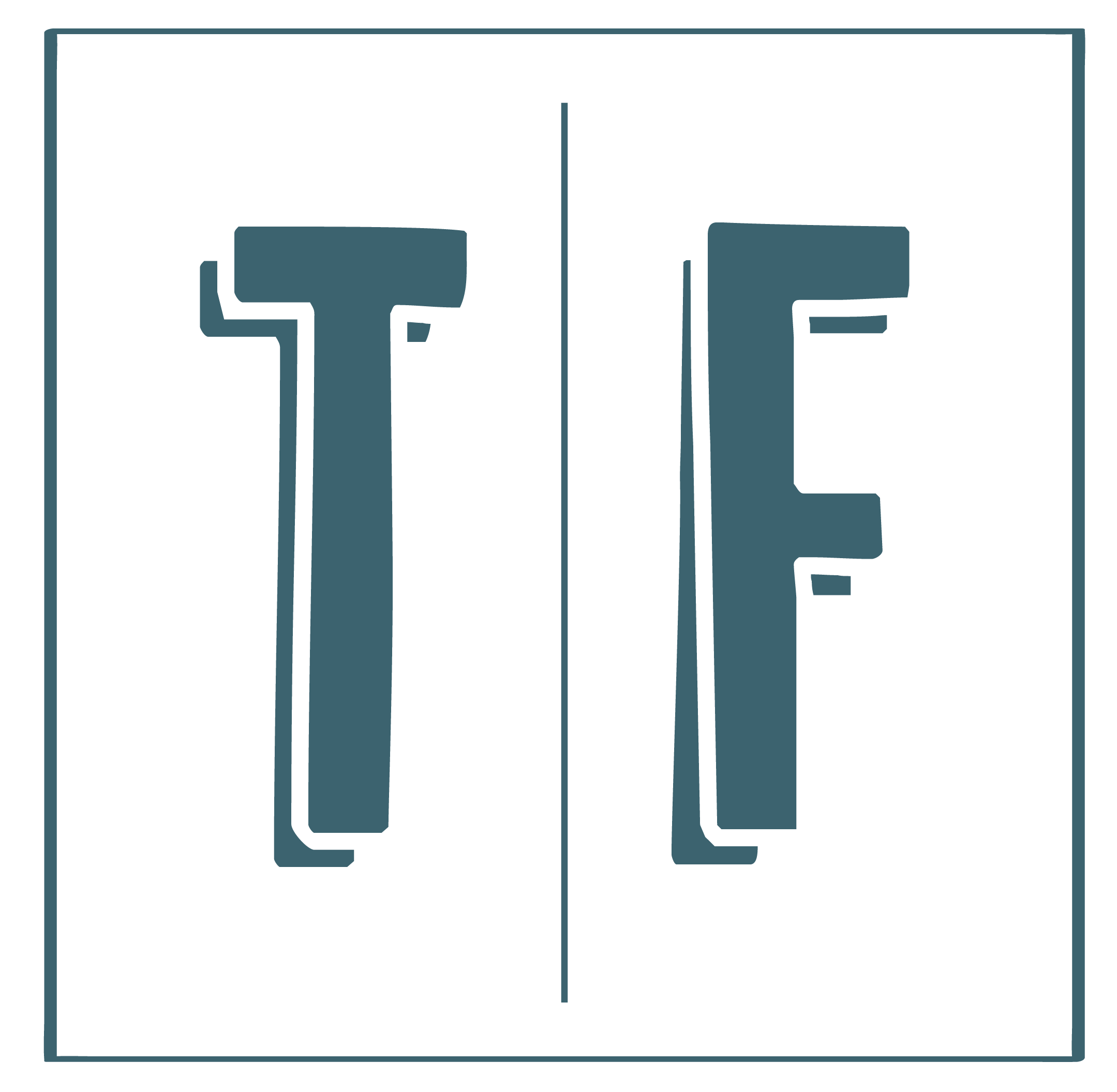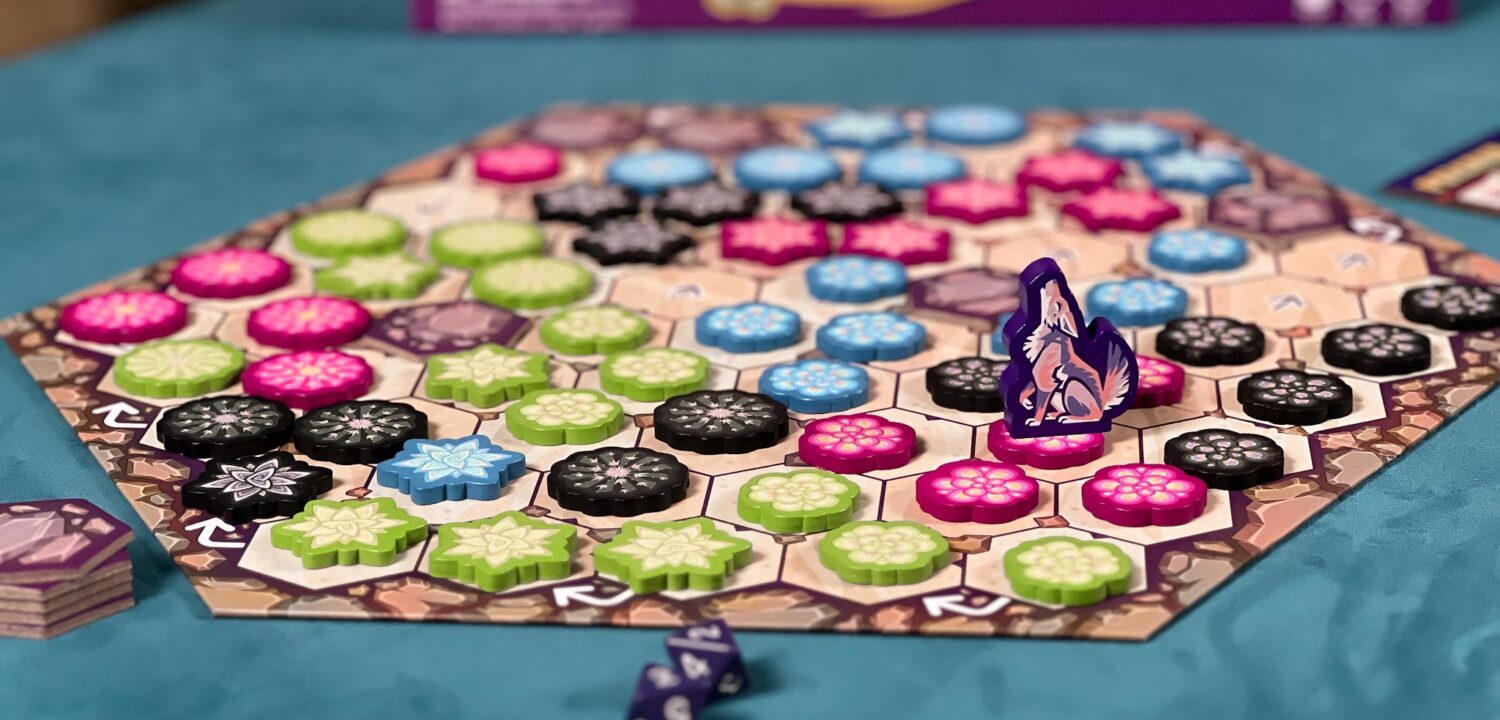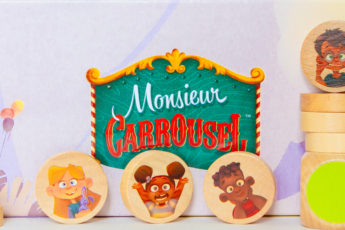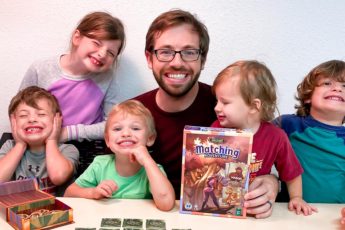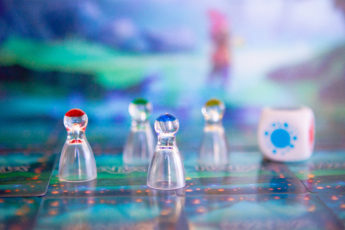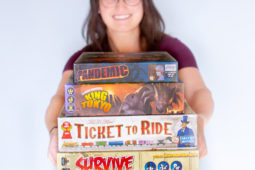This post is sponsored by SimplyFun. One of the tricky elements of playing games with your kids can be finding games that allow for both your younger and your older kids to happily play together.
If the game is complex enough to challenge your older kids, the younger kids might struggle to keep up. Pick a game at the level for a younger player and your older players might find themselves bored.
That’s why it’s always so exciting to find new games that work for our big family and we’re happy to say we’ve found two strategy games that do just that!
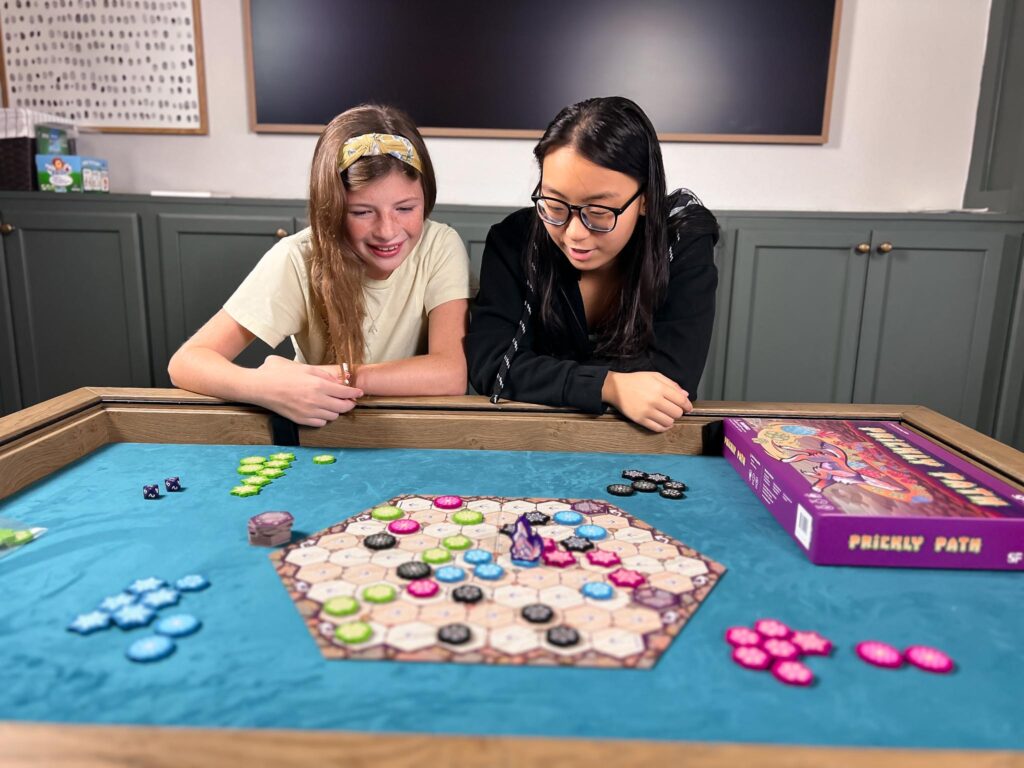
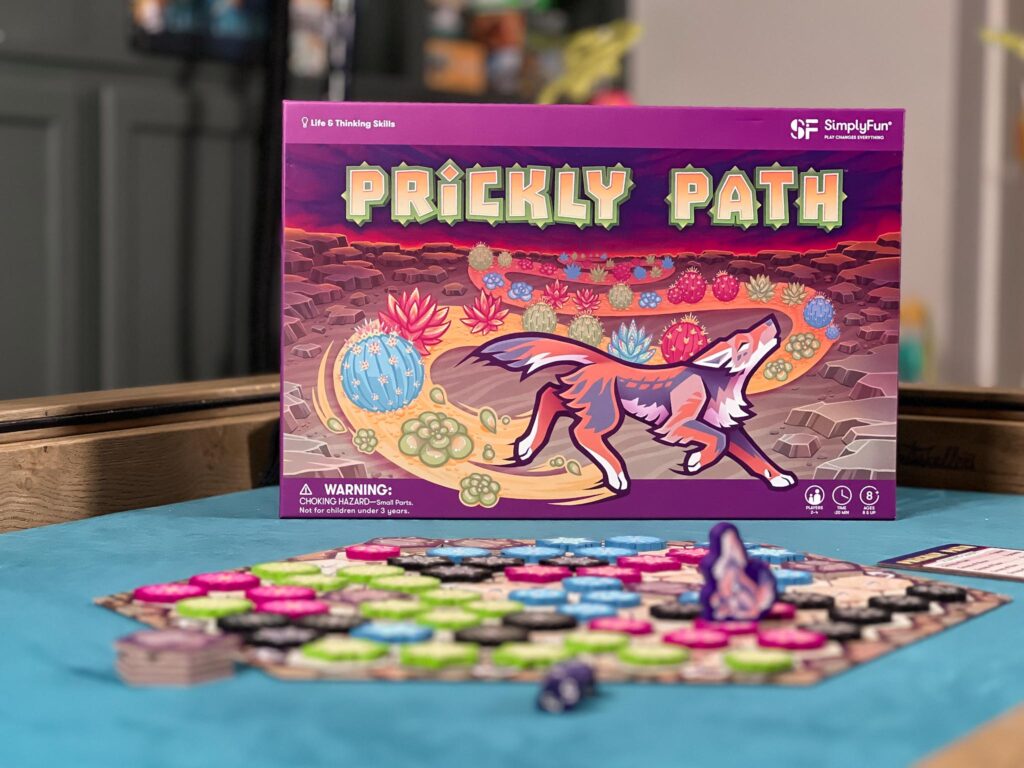
Prickly Path
Prickly Path is all about finding ways to create large cactus groups. All players start with a selection of three different types of cactus tokens in their color and during the game you’ll work to place those onto the board to form groups of the same cactus type to score points.
Players roll two dice and select one of them to move the coyote marker forward the same number of spaces. This spot is now where they can place one of their cactus tokens. Then play passes to the next player. Eventually the coyote will reach the end of the track that snakes across the board and when they happens it loops back to the beginning, offering players another chance to place their pieces by those they previously placed.
If you ever don’t want to place a cactus token, you can choose to skip, which then gives your opponents a chance to place one of their tokens on that space. Then you roll again and must this time pace a token on the board.
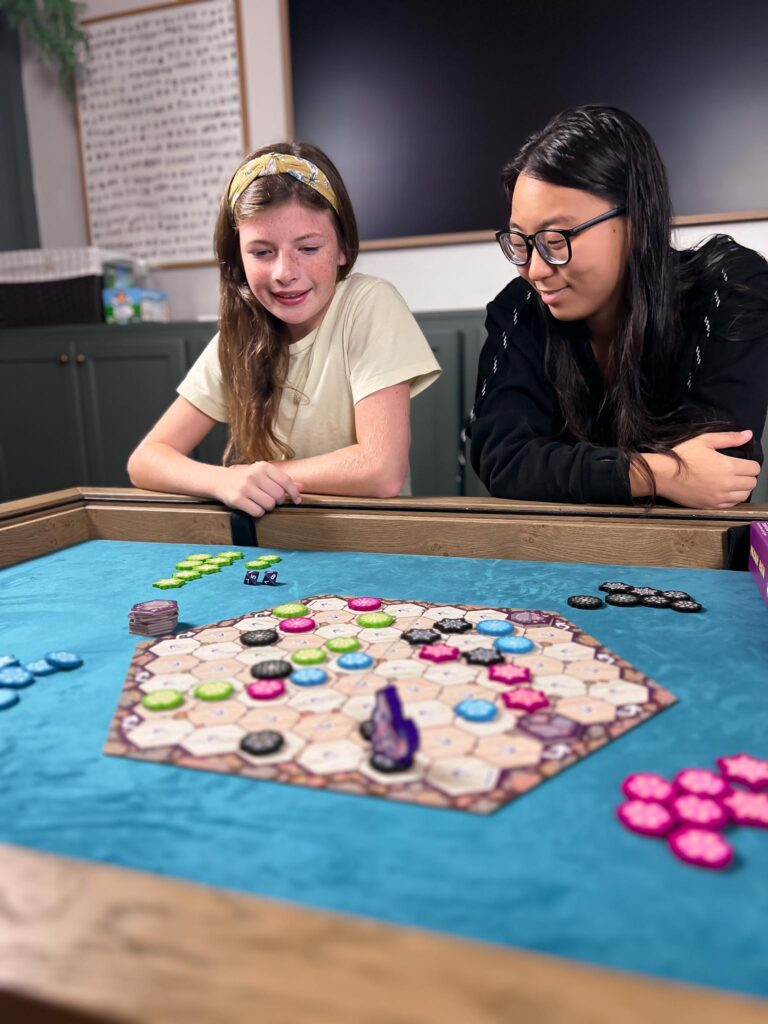
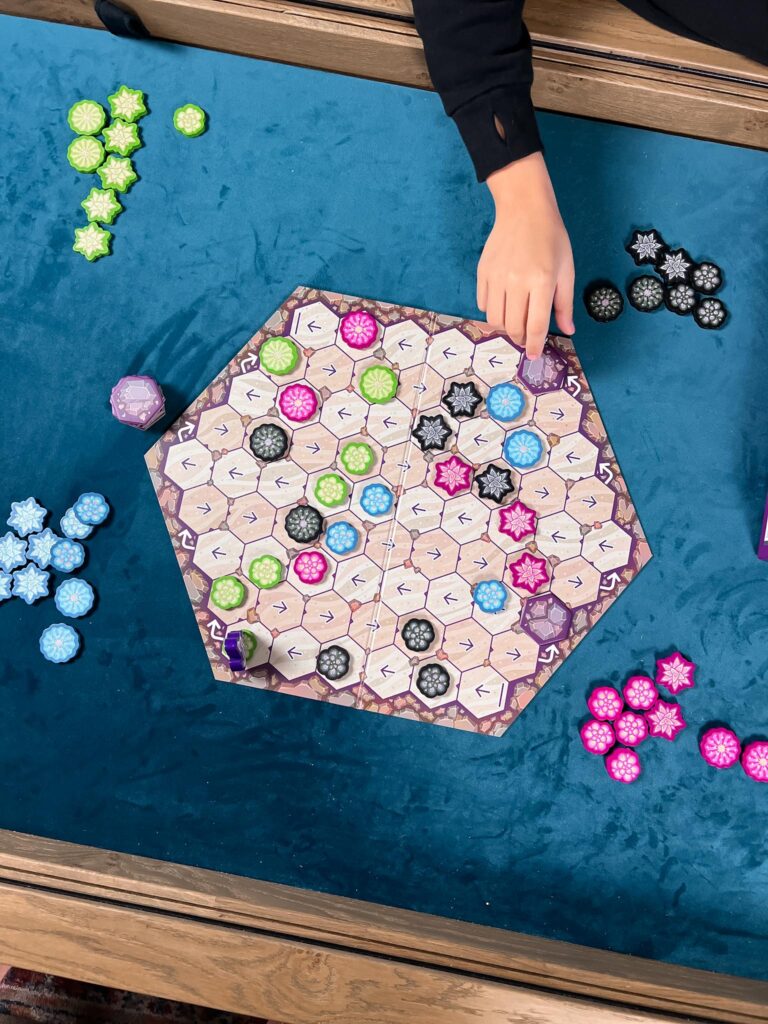
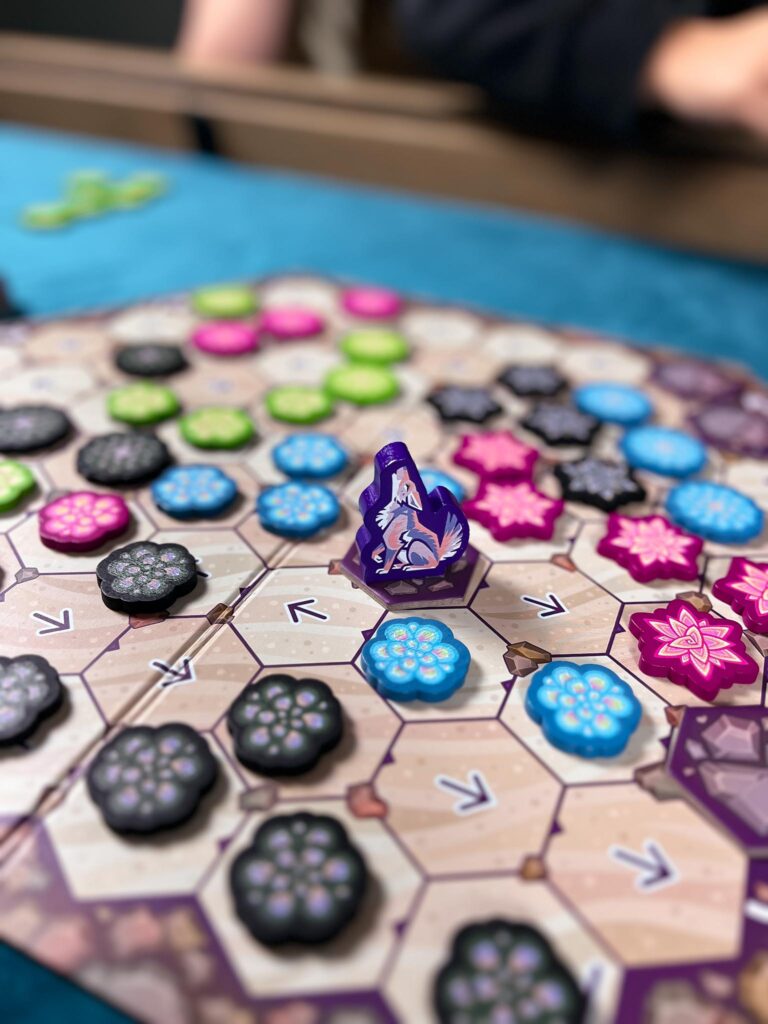
Strategic without Overwhelming
We’ve been loving Prickly Path! It’s nice and simple for our younger players. They can roll the dice, choose one, work on simple counting to move the coyote, and place a token on the board. It’s a nice three step process for them to work through while also beginning to think a little more in depth about the placement of their cacti as they play more and more.
For the older kids and adults, Prickly Path is quite a different strategy game. From the very first token you place on the board you’re thinking about the end game. “Is this a spot that leaves me multiple options for the next time the coyote comes through this section? Or is it a corner that has limited options and I should therefore skip?”
The skipping stones are really fun because you get to decide which die to use before skipping, so you really want to make sure you aren’t choosing a spot that give your opponents a big point grouping while also putting yourself in a solid position to make a good placement on the next roll.
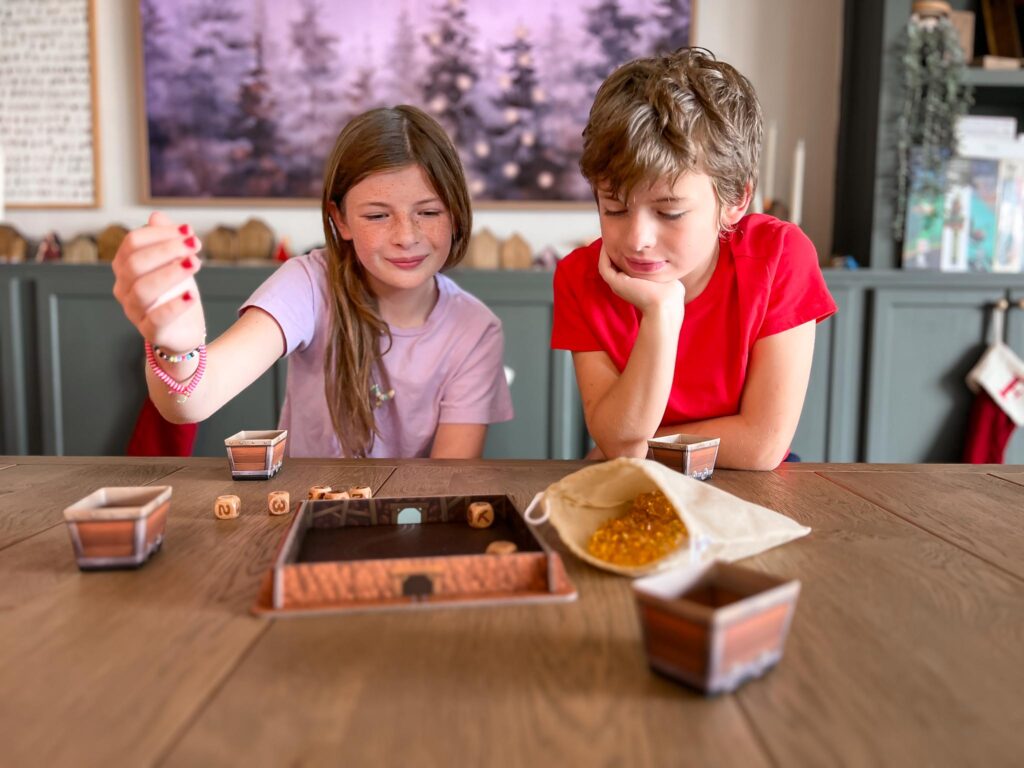
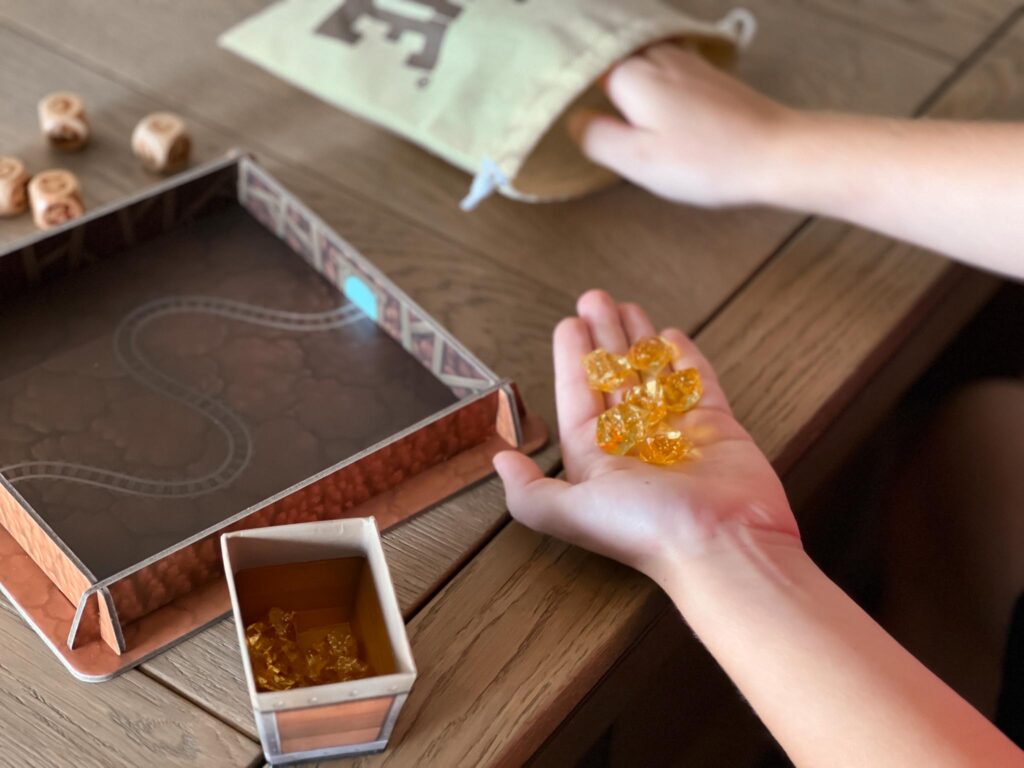
My Mine
Now if you’ve been following us for a bit you know we love a good push your luck game so it’s no surprise that we love My Mine!
You’re working to collect the most gold nuggets by rolling dice and getting three of the same number or multiple gold nugget symbols.
On your turn you’ll roll all the dice into the tray and if you roll a valid combination you can set it aside. Then you can choose to stop and end your turn to claim your gold based on your dice, or you can roll the remaining dice again and set aside more dice. However, if you roll again and do not have a valid combination to set aside, you lose all of the previously set aside dice, collecting no gold for that turn.
I love a dice game for perfectly putting kids into those strategic risk vs reward situations. Is it worth rolling the dice again to get a better result? Or should I not risk losing the gains I’ve already made this turn, even though they could be better?
Its simple strategy with straightforward rules so it works for a good variety of ages. Your older kids will again be able to take the full advantage of the strategic decision process, while younger players will have fun rolling the dice, getting the gold nuggets, and learning a little more each game.
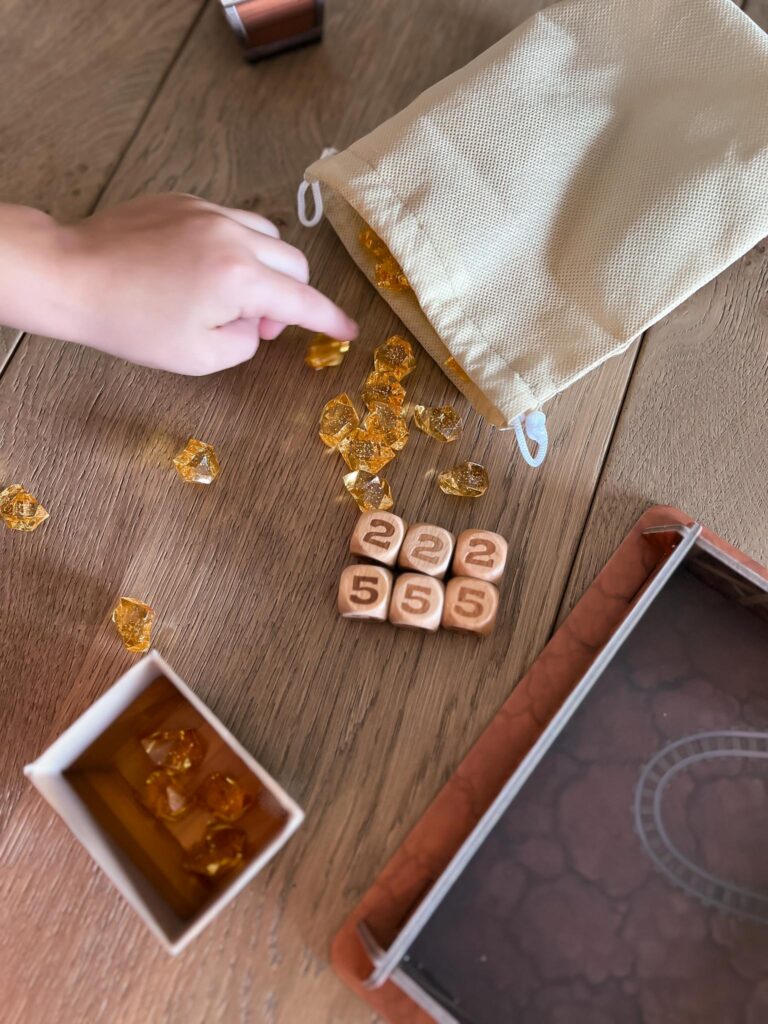
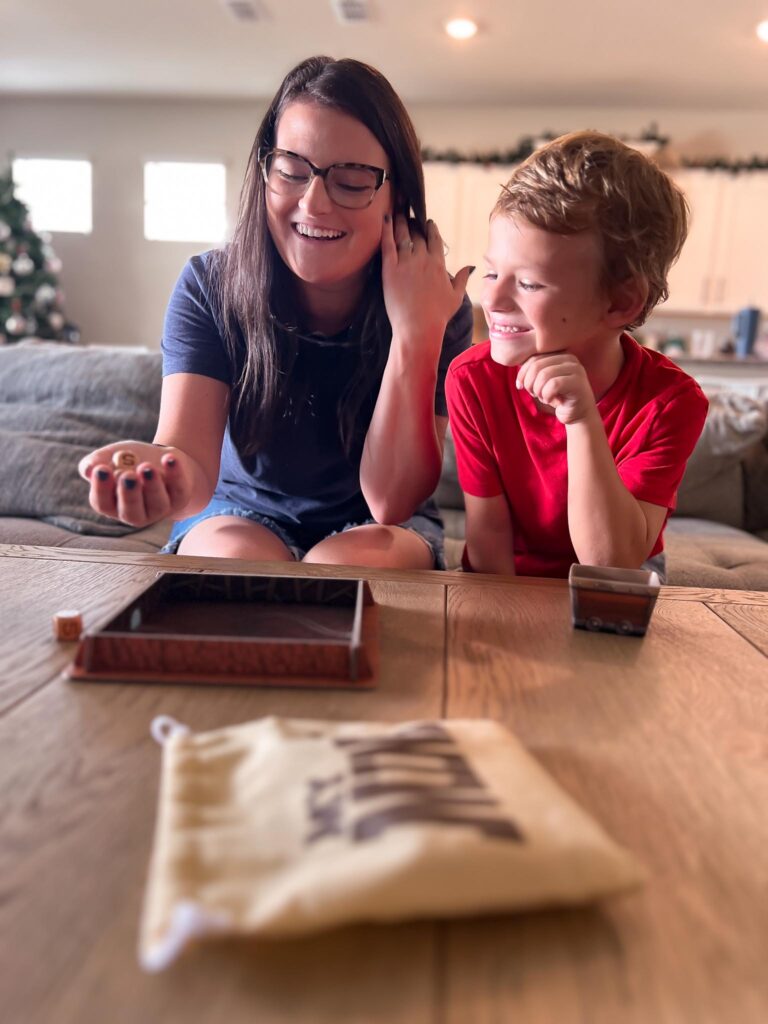
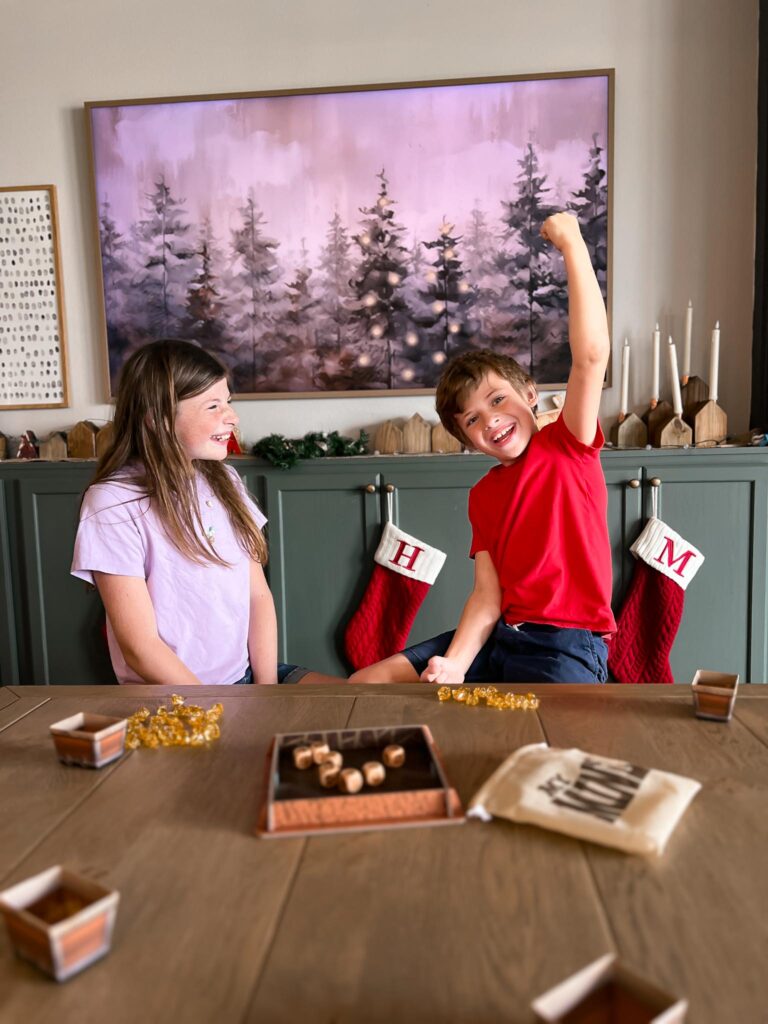
Educational and Fun
The best part about both games is that they have a solid educational elements.
Both games have simple math with a large focus on strategic decision making. I like that the games are both straightforward, making it easier for kids to focus on the best strategy for their goals.
In Prickly Path we helped our kids see that some areas on the board are better than others to place their cactus tokens. Because everything is played out in the open with big, colorful pieces, it’s easy for them to see which locations leave them with more options to connect their cacti.
In My Mine, you’re not only making the risk/reward decision, but also learning that sometimes, less is more. While it’s exciting to roll three of a kind and set it aside, not every combination is equally valuable. Three 2’s will only earn you 2 gold nuggets, where as three 5’s will earn you 5 nuggets. This means that it might be better to re-roll a set of 2’s since they take three dice to earn only two nuggets.
Learning to make these sound strategic decisions helps your child grow in confidence, form hypotheses, test their predictions, and learn from the results.
Find Prickly Path Here.
Find My Mine Here.
If you enjoyed this post, you may also like:
Jumping Through History with Time Jumpers
15+ Board Games that Help Teach Math
Game Recommendations by Age
strategy games for kids. Family strategy games for kids.
